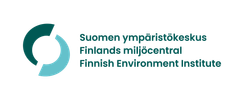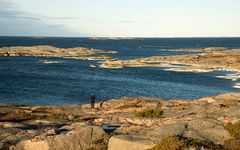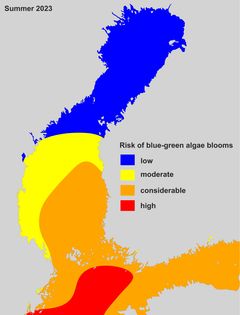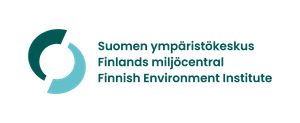Summer algae forecast: Warm and calm weather conditions can lead to powerful blooms of blue-green algae in the Baltic Sea
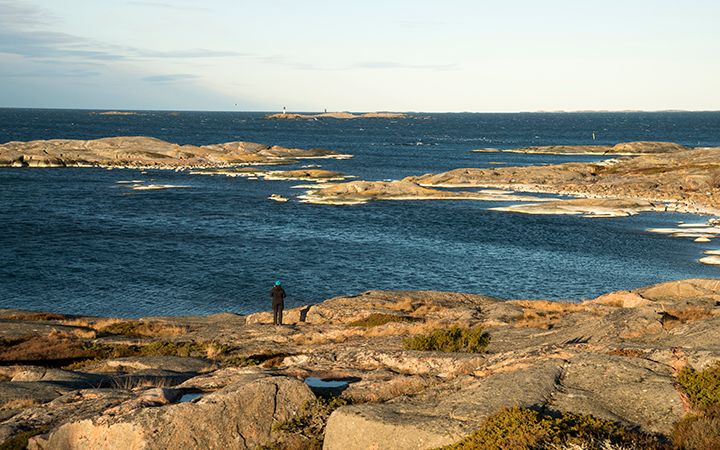
The risk of extensive blooms of blue-green algae in Finnish sea areas still exists, as the nutrient level in the Baltic Sea continues to favour the appearance of blue-green algae. The risk of the formation of rafts of blue-green algae is considerable this summer in the Gulf of Finland, the northern part of the main basin of the Baltic Sea, the southern part of the Bothnian Sea, and in most of the Archipelago Sea. The risk remains low in the Bothnian Bay. Summertime weather will determine if the risk is realised.
Summertime weather will determine intensity of algae blooms
The risk estimate of blue-green algae blooms is based on the previous winter’s nitrogen and phosphorus levels and on ecosystem modelling. The Finnish Environment Institute and the Swedish Meteorological and Hydrological Institute (SMHI) have conducted extensive measurements on wintertime nutrient levels. In addition to wintertime nutrient levels, springtime nutrient data from coastal monitoring by the Centres for Economic Development, Transport, and the Environment (ELY Centres), @Algaline monitoring by ships, and the spring nutrient data from voyages by the marine research vessel Aranda.
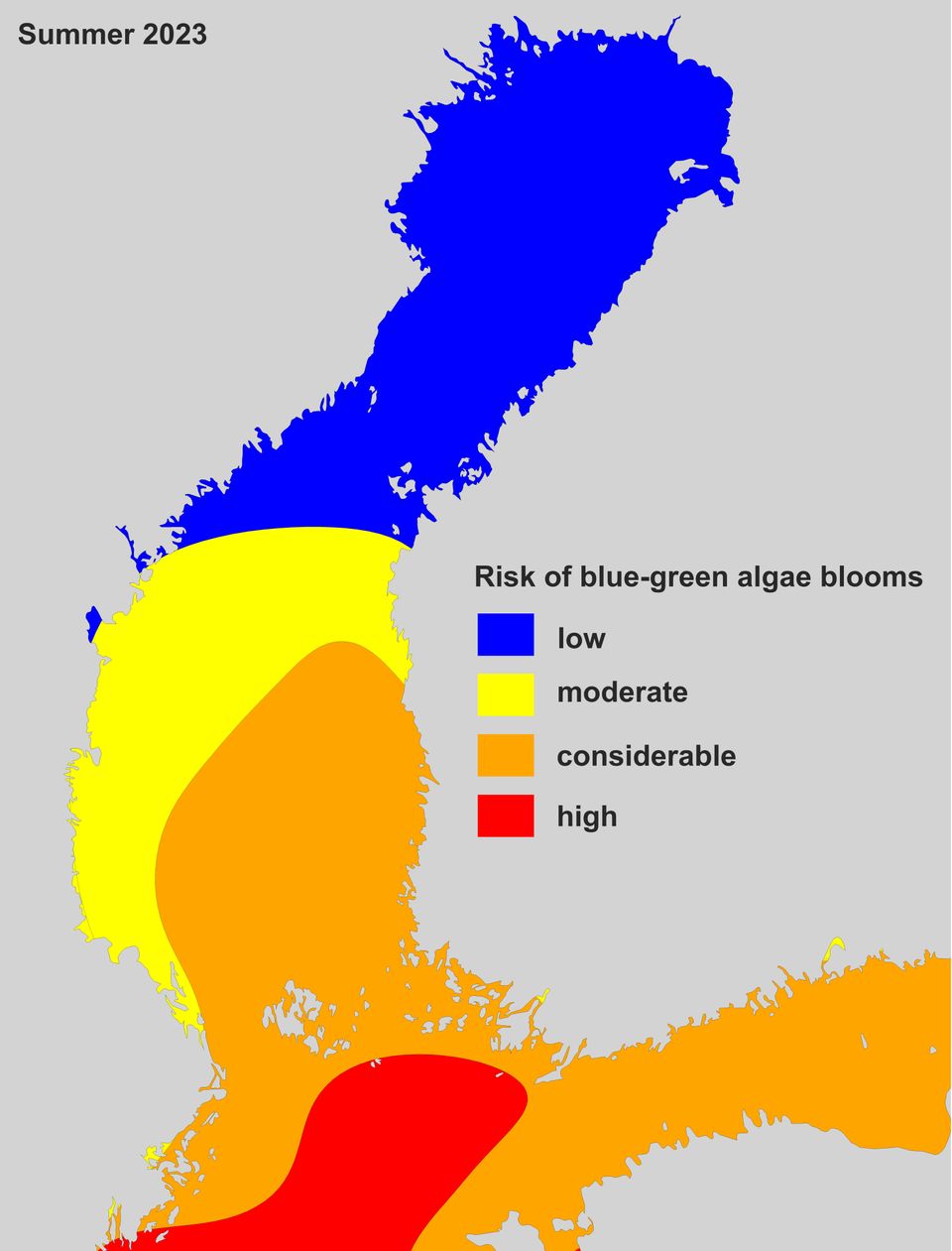
The wintertime nutrient situation provides a regional image of the availability of nitrogen and phosphorus nutrients to the spring blooms of algae. In spring algae blooms, diatoms and dinoflagellates effectively consume nitrogen nutrients, giving the water a reddish-brown colour. However, after the spring bloom, phosphorus nutrients remained widespread in sea areas. Blue-green algae utilise the remaining phosphorus at the surface, which favours the emergence of blooms in the summer when the water gets warmer. A risk forecast based on the phosphorus level is a very good indicator of potential blue-green algae bloom areas. However, weather conditions will be the final deciding factor in the blue-green algae situation.
Blue-green algae thrives in warm water and requires plenty of light to grow. The growth of blue-green algae is slow, and heavy blooms require about two weeks of suitable conditions. The peak of blue-green algae blooms in Finnish marine areas occurs usually at the end of July and early August. The blooms may occur locally late into the autumn, but at that time they are generally not as plentiful as in the summer.
The changes in blue-green algae blooms may be rapid
The formation of masses of algae on the surface at open sea and their drift to the shore depends on wind and water drift conditions. For example, if the wind is blowing toward the shore, surface blooms of blue-green algae can drift into an archipelago area and toward the coast.
The changes in blue-green algae blooms may be rapid. For example, a strong wind will mix a bloom of blue-green algae into the surface water, making the algae more difficult to identify. When the wind eases, blue-green algae may again rise quickly to the surface.
The amount of blue-green algae can vary considerably even in a small area. Water flow conditions and local sources of nutrients may cause blooms of algae along the entire Finnish coast and in the archipelago, especially during calm and warm periods. In addition, wind may cause accumulations of algae in coastal waters and on shores. More detailed information on the movement of algae rafts is available in a weekly bulletin.
Algae notifications getting started
The Finnish Environment Institute issues information on the general blue-green algae situation once a week on Thursdays through the end of August. The summer's first algae report will be issued on the 8th of June 2023, at 13:00.
Observations made on the algae situation by members of the public are collected in the Järvi-meriwiki service.
Keywords
Contacts
Jouni LehtorantaSenior Research ScientistFinnish Environment Insitute
Risk evaluation of algae blooms in Finnish marine areas
Media service at Finnish Environment Institute
The Finnish Environment Institute's Media Service provides information on our research, helps journalists find experts for interviews and provides photos for media use.
Our Communication experts will answer your inquiries on weekdays from 9 am to 4 pm.
Images
Documents
Links
About Suomen ympäristökeskus
It is time to move beyond solving environmental problems one by one, to systemic sustainability transformations. The Finnish Environment Institute (Syke) contributes to building a sustainable society through research, information and services. The Finnish Environment Institute is a research institute with 700 experts and researchers located in Helsinki, Oulu, Jyväskylä and Joensuu.
Subscribe to releases from Suomen ympäristökeskus
Subscribe to all the latest releases from Suomen ympäristökeskus by registering your e-mail address below. You can unsubscribe at any time.
Latest releases from Suomen ympäristökeskus
The blue-green algae situation has remained calm7.8.2025 13:05:00 EEST | Press release
During the past week, the blue-green algae situation has remained calm in inland waters, coastal areas, and open sea areas. Less blue-green algae has been observed in inland waters and coastal areas than is typical for late summer. The situation has also remained stable in open sea areas, with windy weather keeping the algae mixed into the water across all water areas.
Läget med cyanobakterier har förblivit lugnt7.8.2025 13:05:00 EEST | Pressmeddelande
Under den gångna veckan har situationen med cyanobakterier varit lugn både i insjöar, kustområden och öppet hav. Det har observerats mindre cyanobakterier i insjöar och längs kusterna än vad som är vanligt för sensommaren. Även på öppet hav har situationen varit stabil, och det blåsiga vädret har hållit cyanobakterierna väl blandade i vattnet över hela vattenområdena.
Sinilevätilanne on jatkunut rauhallisena7.8.2025 13:00:00 EEST | Tiedote
Kuluneen viikon aikana sinilevätilanne on jatkunut rauhallisena sekä sisävesi-, rannikko- että avomerialueilla. Sisävesillä ja rannikolla sinilevää on havaittu vähemmän kuin tyypillisesti loppukesällä. Myös avomerellä sinilevätilanne on pysynyt vakaana, ja tuulinen sää on pitänyt levän sekoittuneena veteen kaikilla vesialuilla.
Blue-green algae observations have decreased this week31.7.2025 13:10:00 EEST | Press release
Compared to the previous week, the number of blue-green algae observations has decreased in inland waters, along the coast, and in open sea areas. In inland waters, blue-green algae occur less than usual for this time of year, while the situation along the coast and in the open sea has remained at an average level. However, the situation varies by region, and individual, more abundant occurrences have been observed in different parts of the country.
Cyanobakterieobservationerna har minskat under veckan31.7.2025 13:10:00 EEST | Pressmeddelande
Jämfört med föregående vecka har antalet cyanobakterieobservationer minskat både i insjöar, längs kusten och på öppet hav. I insjöar förekommer mindre algblomning än normalt för årstiden, medan situationen vid kusten och på öppet hav har hållit sig på en genomsnittlig nivå. Situationen varierar dock regionalt, och enskilda rikliga blomningar har observerats på olika håll i landet.
In our pressroom you can read all our latest releases, find our press contacts, images, documents and other relevant information about us.
Visit our pressroom